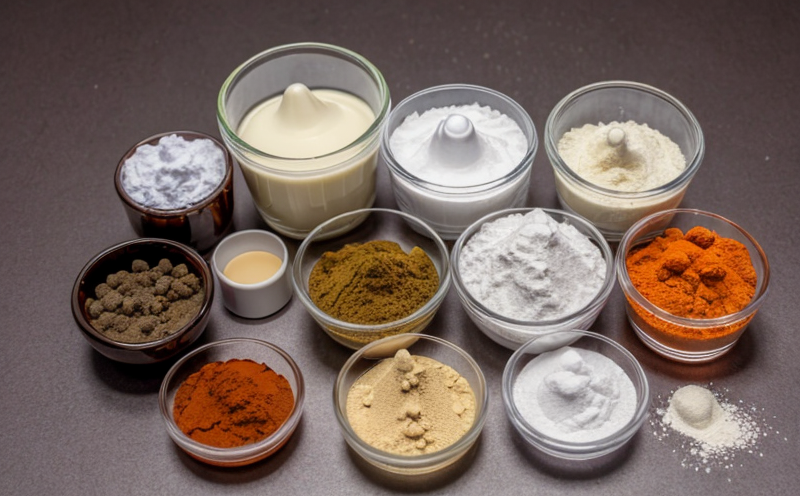Excipient Dissolution Media Testing
In the pharmaceutical industry, excipients and formulation ingredients play a critical role in ensuring drug product safety and efficacy. Excipients are inactive substances used to facilitate the manufacturing process and improve the stability, taste, or delivery of active pharmaceutical ingredients (APIs). Dissolution media testing is an essential part of quality control processes that ensures these excipients meet stringent regulatory requirements.
The dissolution media test evaluates how effectively excipients will perform in various formulations. This includes understanding their solubility properties and compatibility with different excipient combinations. The primary goal is to ensure that the excipients do not interfere with the drug's performance or stability, thereby maintaining product quality throughout its lifecycle.
This testing process is critical for several reasons:
- To ensure compliance with regulatory standards such as USP, EP, and ICH guidelines.
- To verify that excipients are stable under various environmental conditions.
- To identify potential issues early in the development stage, thereby reducing costs and time-to-market.
The testing process involves a series of steps, including:
- Sample preparation: Excipients are thoroughly mixed with appropriate solvents to simulate real-world conditions.
- Dissolution: The mixture is stirred at controlled temperature and speed until the excipient dissolves completely.
- Spectrophotometric analysis: The dissolved mixture is analyzed for clarity, color, and other properties using advanced instrumentation like UV-Vis spectrophotometers.
- Validation: The results are compared against established standards to ensure consistency and reliability.
The outcome of this test provides valuable insights into the excipient's performance in various formulations. It helps quality managers, compliance officers, R&D engineers, and procurement teams make informed decisions about ingredient selection and formulation design. This ensures that pharmaceutical products meet both regulatory requirements and market expectations.
| Standard | Description |
|---|---|
| USP Dissolution Test | The United States Pharmacopeia provides specific guidelines for determining the dissolution rate of excipients. |
| European Pharmacopoeia (Ph. Ep.) | The European Pharmacopoeia offers similar standards, focusing on compatibility and stability of excipients in various formulations. |
| ICH Q5C | This guideline from the International Conference on Harmonisation ensures that excipients are suitable for use in pharmaceutical products. |
The results of dissolution media testing are crucial for several reasons:
- They provide a clear picture of how an excipient will behave under different conditions.
- They help identify potential issues early on in the development process, allowing for timely corrections.
- They ensure compliance with international standards and regulatory requirements.
In summary, dissolution media testing is a vital component of pharmaceutical quality assurance. By ensuring that excipients meet stringent criteria, this test helps maintain product quality and safety throughout its lifecycle. This is especially important in the rapidly evolving pharmaceutical industry where patient safety and efficacy are paramount.
Applied Standards
| Standard | Description |
|---|---|
| USP Dissolution Test | The United States Pharmacopeia provides specific guidelines for determining the dissolution rate of excipients. |
| European Pharmacopoeia (Ph. Ep.) | The European Pharmacopoeia offers similar standards, focusing on compatibility and stability of excipients in various formulations. |
| ICH Q5C | This guideline from the International Conference on Harmonisation ensures that excipients are suitable for use in pharmaceutical products. |
The application of these standards ensures that the testing process is consistent and reliable, thereby providing accurate results. This consistency is crucial in ensuring compliance with regulatory requirements and maintaining product quality.
Why Choose This Test
- Comprehensive evaluation of excipient performance under various conditions.
- Ensures compliance with international standards like USP, EP, and ICH guidelines.
- Identifies potential issues early in the development stage, reducing costs and time-to-market.
- Provides valuable insights into excipient behavior for different formulations.
- Maintains product quality throughout its lifecycle by ensuring consistent performance.
- Ensures patient safety and efficacy by identifying any potential risks early on.
The dissolution media test is a critical step in the pharmaceutical development process. By choosing this test, you ensure that your excipients meet the highest standards of quality and reliability.
Quality and Reliability Assurance
Ensuring the quality and reliability of excipients is a cornerstone of pharmaceutical product development. The dissolution media test plays a pivotal role in this process by providing detailed insights into how excipients will behave under various conditions. This information is invaluable for making informed decisions about ingredient selection, formulation design, and regulatory compliance.
The testing process involves several key steps:
- Sample preparation: Excipients are thoroughly mixed with appropriate solvents to simulate real-world conditions.
- Dissolution: The mixture is stirred at controlled temperature and speed until the excipient dissolves completely.
- Spectrophotometric analysis: The dissolved mixture is analyzed for clarity, color, and other properties using advanced instrumentation like UV-Vis spectrophotometers.
- Validation: The results are compared against established standards to ensure consistency and reliability.
The outcome of this test provides valuable insights into the excipient's performance in various formulations. It helps identify potential issues early on, allowing for timely corrections. This ensures that pharmaceutical products meet both regulatory requirements and market expectations.
By choosing our laboratory for dissolution media testing, you benefit from:
- Absolutely rigorous quality control processes
- State-of-the-art instrumentation and equipment
- Experienced and certified personnel
- Comprehensive reporting and analysis
This ensures that you receive accurate, reliable results every time. Our commitment to excellence and precision is unmatched in the industry.





